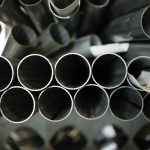Refractory solutions play a vital role in boosting industrial performance by protecting equipment against extreme heat and harsh conditions. Expert materials and tailored designs extend operational life, enhance efficiency, and reduce maintenance in sectors like steelmaking, aluminum, and energy. Understanding the right refractory options is key to sustaining durability and cutting costs in demanding environments.
Overview of Refractory Solutions for Heavy Industries
Refractory materials are essential to withstand extreme thermal conditions in heavy industries like steelmaking, cement, and petrochemicals. These specialized materials protect furnace linings, ensuring operational efficiency and safety.
In the same genre : Why Are UK Business Services Essential for Economic Growth?
High-temperature lining materials such as castables and fire bricks are designed to resist thermal shock, corrosion, and mechanical wear. Choosing the right product depends on the severity of operational conditions and the specific industry requirements.
Industries rely heavily on durable and customized refractory systems. Saint-Gobain, for example, provides solutions like the NORFLOW® castables, known for their self-flowing properties, easing installation and reducing downtime. Trent Refractories manufactures precast shapes for larger furnaces, ensuring precise fits and longevity.
Also read : Why Are UK Business Services Essential for Economic Growth?
You can view more details on this page: http://mxs-refractories.com/. Their extensive expertise ensures industries operate with optimized, long-lasting solutions. This range of materials helps prevent failures, reduce maintenance, and extend service life, ultimately boosting productivity in high-temperature applications.
Types of Refractory Materials and Industry Applications
High-Temperature Refractory Ceramic Materials
High-temperature lining materials play a fundamental role in sustaining operational temperatures within steelmaking and non-ferrous metal furnaces. Refractory ceramic materials—engineered with precise thermal conductivity properties—enable temperature control in refractory applications while maintaining stability during alternating thermal cycles. Whether using fireproof ceramics or high purity alumina bricks, these solutions offer exceptional durability in environments that demand continual exposure to thermal shock resistant solutions. Their low thermal insulation system porosity and high resistance to corrosion and abrasion make them indispensable for industrial kiln protection and power plant refractory linings.
Specialized Refractory Products for Sector Demands
Modern industries require tailored custom heat containment solutions to match sector-specific needs. The aluminum industry relies on castable refractory formulations and slag-resistant linings, such as those in aluminum reduction cells, to mitigate oxidation and corrosion. Meanwhile, copper and zinc processing furnaces benefit from wear-resistant bricks and carbon-based refractory products, designed to control slag penetration resistance and maximize refractory lifespan optimization. Waste-to-energy and petrochemical plant refractory systems require advanced thermal barrier coatings and ceramic fiber insulation, supporting both durability and heat-stress resistant engineering, with quick refractory repair techniques reducing downtime.
Innovations in Refractory Technologies
Recent advances focus on eco-friendly refractory materials and high-performance refractory composites. Lightweight insulation products and ceramic insulating blankets enhance energy-efficient insulation solutions. Cutting-edge refractory material testing and certification procedures, combined with refractory solution cost analysis and performance benchmarking of heat barriers, ensure safety and compliance. These innovations in refractory composite materials development are reshaping the expected refractory product lifecycle and sustainability.
Designing and Maintaining Refractory Systems to Optimize Industrial Performance
Custom Refractory Installation Techniques and Best Practices
Precision is paramount when working with high-temperature lining materials in industrial environments. Strict adherence to refractory installation techniques and industry standards is necessary to maximize the service life of heat-resistant industrial coatings and durable furnace linings. Every interface—from refractory mortar mixes to castable refractory formulations—must be expertly applied. Accurate bricklaying standards for refractory work and thorough refractory material testing and certification reduce risks of hot-spot formation and improve the performance of thermal insulation systems. Quality control, spanning refractory product durability to the shape consistency of wear-resistant bricks, is enforced at every installation stage.
Refractory Maintenance, Repair, and Quality Assurance
Long-term efficiency in metallurgical process linings and petrochemical plant refractory systems depends on consistent refractory maintenance best practices and advanced monitoring. Smart monitoring of refractory linings, integrated with refractory wear monitoring tools, can detect early signs of refractory cracks, shrinkage, or corrosion in slag-resistant linings. Proactive industrial furnace repairs utilize refractory failure analysis and refractory cracks prevention strategies—helping to extend the refractory product lifecycle and reduce unexpected production interruptions. Documentation of refractory inspection protocols and maintenance scheduling for refractory systems ensures continuous adherence to refractory quality control standards.
Case Studies and Technological Advancements
Recent refractory product innovations feature refractory design software alongside heat recovery system integration. Advanced refractory engineering consulting enables customized kiln linings for challenging applications in glass manufacturing furnace linings and power plant refractory linings. These solutions maintain performance even through alternating thermal cycle resistance, confirming the strength of corrosion-resistant heat barriers and thermal barrier coatings in everyday industrial heat containment strategies.






